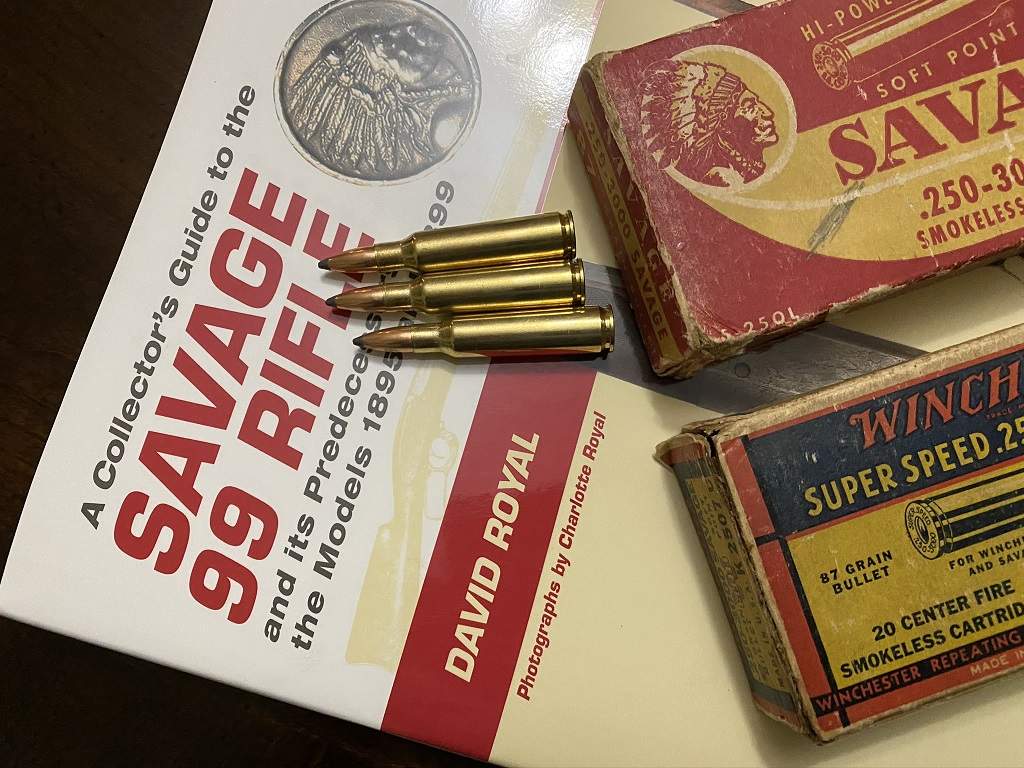Not necessarily cool to do that I agree, if the gun was a rare model or caliber. But in my opinion it just doesn't get any better than this post-war 99EG from Savage's first year at the Chicopee Falls plant, especially for a collector that actually shoots his guns. It puts a smile on my face every time.
"That is understandable", says the old guy that still runs 16" whitewall Dunlop tires on his 1997 Heritage Springer. I cringe when I see an FLSTS with replaced tins or paint scheme. My Harley came in only two colors, Birch White or Birch White. Well, one had a Red Stripe and one had a Blue Stripe. Mine has the Blue Stripe. At some point in this old gun's life, a previous owner thought enough of the gun to pay homage by giving it the best possible wood upgrade.

Thanks to Magnum Bob over at the forum, I now know that the wood is "Walnut crotch wood in the butt. Forend appears more straight grained." After researching, I'm convinced this is not the Turkish Walnut we've seen so much of in the last 30 to 40 years. And About this Fancy Butt Plate... With such attention to every other detail like the widows peak, those protruding screwheads in the photos were a puzzlement to me. Turns out they just weren't seated well. Evidently someone else removed the plate to investigate as I did when the gun arrived and over-cautiously tightened them too little.

Pocono Jack let me know that it is a "Niedner style butt plate. Designed by A.O.Niedner, an early 20th century gunsmith and rifle maker." Adolph Otto Niedner (1863-1954) was born in Philadelphia to German immigrant parents. He enlisted in the Army in 1880, fought against Geronimo and the Apaches and had a scalp wound to prove it. After his discharge from the Army in 1883 he served on the Milwaukee police force until 1899 when he moved to Malden, Massachusetts.
He opened a gunsmith shop in 1906 and made prototype gunsights for inventor Eugene Patridge. He established the Niedner Rifle Company after moving to Michigan in 1920. Niedner manufactured custom rifles for many noted riflemen including Townsend Whelen, Charles Newton and Ned Roberts. How's that for a customer list? With a name like Adolph... I can see why the guy would go by A.O. The steel pistol grip cap was also designed by A.O. Niedner to perfectly match the steel butt plate. In all of its simplicity it is truly a work of art.

As a big fan of Colt handguns, I have rarely appreciated third-party modifications to the original handguns. And if I had been a longtime fan or collector of Savage rifles, I might not be so accepting of this creation. Oh, and this Monte Carlo stock... The stepped-up comb and cheek piece became popular in the 1950's when scopes came into widespread use. I'm going out on a limb and guessing the modifications were done in the early '50s. In fact, the mods could have been made in '49 because it is likely this gun shipped in June of that year. In 1949 the first serial number produced was 520791, the last serial number that year was about 541100 and the serial number of my gun is 529636.
With only weeks into my exposure to the Model 99 I have a lot to learn and I may have to come back and rewrite this article entirely so please forgive my ignorance. My only hope is that I make up for it with enthusiasm and excitement. We all speculate to some extent when we buy an old gun. I think I have an $800 gun with $800 worth of furniture on it. Please smile when you laugh. But I will say this. I've already had $1,600 worth of fun in just two short weeks!





